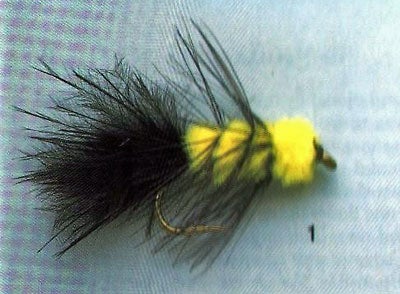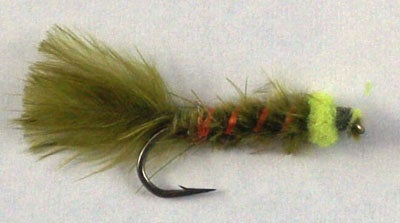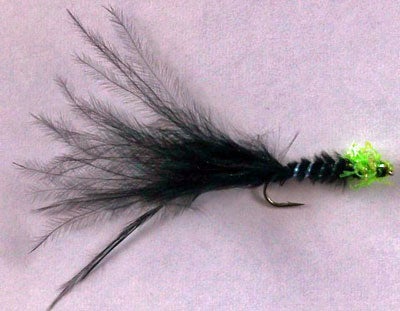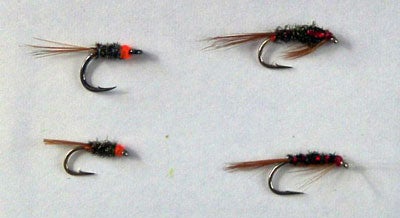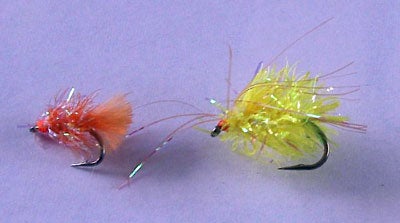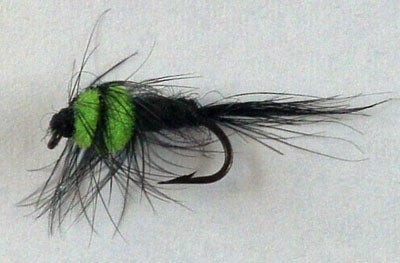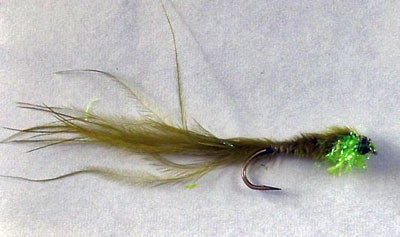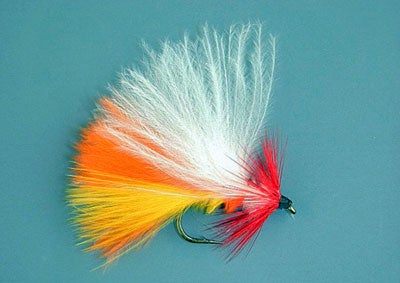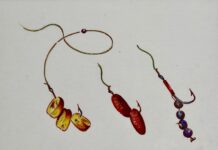Some Thoughts on Flies (with apologies to the inventor of the Consett Budgie!)“What did you catch that on mate?” And “What are the best flies for this place?” Are typical questions that I, like the rest of you, am happy to answer. A list of familiar names trips off the tongue: Diawl Bach, Super Glue Buzzer, PTN, GRHE, Zonker, Blob. You know the score: a mix of tried and trusted patterns combined with the latest, must have, absolute certainty, guaranteed to empty the place, super fly. I’ve got a confession to make. Purists stop reading here! My Diawl Bach probably doesn’t look like yours and you might not recognise my Concrete Bowl, but they still catch as many fish, probably more. I’ve really only come to realise this quite recently, but I’ve been deconstructing my fly patterns for a number of years now. So what the hell is going on? I started fly fishing in the late 80’s and, like many, I soon took a fly tying course so that I could tie my own, and I suppose this is where the trouble started! I was taught by a guy called John Gilpin. As one of the regulars at Toft Newton John had been involved in the development of a fly called the Concrete Bowl and this was one of the patterns that he taught in his class. For those of you who don’t know the pattern it’s a fly that neatly falls into the genus Lumph. It’s joined there by flies such as the Tadpole, the Woolly Worm and the Montana. Flies which probably started out as a loose imitation of something or other, somewhere in the world, but which have become resident in our fly boxes due to their sheer munchability. They have that nymphy quality which makes us feel good and a cut above the guy just down the bank thrashing the water with a Consett Budgie. I now realise that the Concrete Bowl was the start of the slippery slope. By the time I learnt it from John it had already started to mutate in the hands of a thinking angler. Marabou had replaced the chenille body and the palmered hackle (a la Woolly Worm) had gone the way of all flesh. As I diversified from river fishing into the wild and windy upland reservoirs of the Washburn Valley the Concrete Bowl became my lifeline. It took stockies as well as any other fly, but it also had that extra something that appealed to the wary, twitchy survivors of the post-stocking, catch and release frenzy. It even tempted those rarities in these deep, cold, acid waters: lithe and silvery over-wintered rainbows. As I gained experience the fly began to mutate in my vice. Only slightly, mind, nothing that would make it unrecognisable to Mr Gilpin. But mutate it did. These early modifications were really only to make it easier to fish slowly. So it lost a bit of lead, became smaller, slimmer and grew a longer tail. This allowed a very slow figure of eight retrieve or a slow drift round in a breeze. See I told you it was almost a nymph!
And then I discovered Fritz! No, not the big German in the lederhosen, the lovely, shiny, twinkly stuff beloved of modern lure designers. Well it is technically chenille and it did look good at the pointy end of my Concrete Bowl! Pearl tinsel. Hmm… did you know if you stretch it carefully it produces a lovely, iridescent ribbing material? Wow! A new, must have, absolute certainty, guaranteed to empty the place, super fly! Well it was at least twice as effective as my original tying.
I blame my brother for the next bit. It’s all his fault for moving within spitting distance of Rutland Water. I discovered lowland reservoirs and grown-on rainbows. I soon became a regular visitor to chez Meeghan-minor and, purely by accident you understand, the banks of Rutland Water. The good old Concrete Bowl still worked, but regulars soon converted me to the delights of the Super Glue Buzzer and the Diawl Bach. And soon, clamped into my radioactive vice, the poor little devil started to mutate. This time it was due to a combination of reading around the subject of anorexic nymph patterns, the success of the fly itself, and pure laziness! I’d read about the success of the anorexic patterns developed by the likes of John White and, coincidentally, the teeth of the rainbows I caught put my shop bought flies on a crash diet. I soon noticed that the tatty, skeletal flies that I’d used on previous trips were noticeably more successful than plump, shiny new ones. This forced me to the vice, and my natural idleness started to make me wonder what I could leave out to make the fly easier to tie. Now I hate beard hackles. They are fiddly to tie and I always get them the wrong length. That was the first to go. The rib became stretched pearl tinsel (remember that?). And I just happened to have some fluorescent orange thread lying around in my fly tying box that looked just perfect under the peacock. Now I can’t say that this fly is any more successful than a sparsely dressed conventional Diawl Bach, but it is a lot easier and quicker to tie and it eats most shop bought versions for breakfast!
I’ve used the same techniques on the Montana and the Blob and can vouch for the fact that in both cases the modified version is as effective as the original.
So there we are. The common theme is that over time I’ve consciously, or unconsciously, simplified the original pattern. Taking bits out and seeing what happens and replacing materials as new, more effective ones appear. The Concrete Bowl has really been deconstructed back to its distant ancestor the Tadpole, or maybe an Egg Sucking Leech (sounds like an insult on the Barbel forum that!). The Diawl Bach is still recognisable as a descendant of the original, but it’s much simpler to tie and has a certain extra something against most commercially tied versions in general use. It’s early days yet on the Blob, but I’ve had some success with my version. Its not quite as in your face as the shop bought version, but then I will probably never use it in the circumstances for which it was originally designed on the highly competitive match circuit. The Montana looks a little too much like the Concrete Bowl for my liking (hence the name) and I’ll have to give it further though I think. Feel free to take these patterns and work on them yourselves. Just let me know when you develop a new, must have, absolute certainty, guaranteed to empty the place, super fly! Oh, and for those of you who have never seen one, here is a Consett Budgie:
DressingsConcrete Bowl (Sean’s version) Hook:size 12 long shank lure hook weighted with one layer of fine lead wire Concrete Montana Hook: size 12 long shank lure hook weighted with one layer of fine lead wire Diawl Bach (Sean’s version) Hook:size 14 wet fly (or a heavy carp hook – I use a size 10 ESP Raptor) Blob (Sean’s version) Hook:size 14 wet fly **Harrison’s Owner Hooks Competition Contender** | ||||||||
|
Welcome!Log into your account










